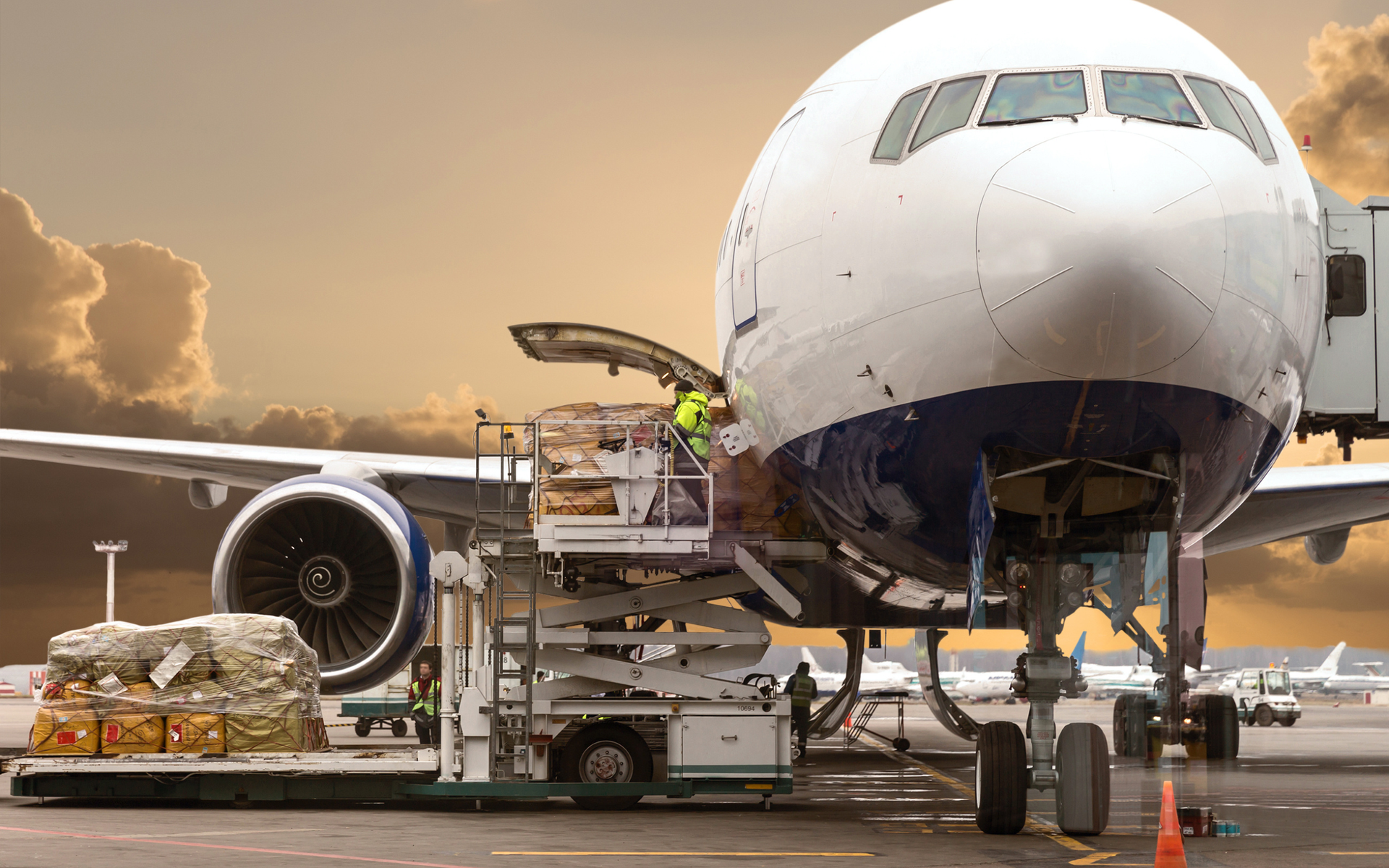The Role of Cybersecurity in Airport Infrastructure Management
October 7, 2025

Introduction
Airports have become complex digital ecosystems. From flight operations to baggage systems, almost every function relies on connected technology. This dependency has created a new challenge for airport managers: how to protect these digital systems from cyber threats.
Recent years have seen a rise in ransomware attacks targeting transportation and aviation systems across the globe. In 2023, several major airports experienced disruptions that delayed flights and damaged public trust. The aviation industry has become a primary target for cybercriminals because of the scale of data it handles and the critical nature of its operations (Airports Council International, 2023).
This blog is written for airport executives, cybersecurity professionals, and IT managers who want to improve the resilience of their airport systems. It explains how cybersecurity supports airport infrastructure management, explores current risks, and outlines practical steps to reduce vulnerabilities.
Cybersecurity means protecting digital assets, networks, and systems from unauthorised access or attack. In an airport, this includes air traffic management systems, passenger data platforms, and operational technology controlling physical equipment such as lighting and baggage conveyors. When these systems are compromised, the impact extends far beyond digital damage. Delays, safety risks, and loss of passenger confidence can follow.
Airports are under constant pressure to maintain security while providing a seamless travel experience. Effective cybersecurity is now as important as physical security in ensuring safe and efficient airport operations.
Growing Threats to Airport Infrastructure
Airports face a unique mix of cyber threats. They manage thousands of devices, networks, and data sources that must remain operational twenty-four hours a day. The complexity of these systems increases exposure to cyber risk.
One of the most common threats is ransomware. Attackers encrypt files or systems and demand payment to restore access. In 2022, several European airports faced temporary shutdowns after cybercriminals disrupted critical networks. Such incidents highlight the dependency of airports on digital infrastructure and the potential chaos that a single breach can cause (European Union Aviation Safety Agency, 2022).
Phishing attacks also pose a major risk. Cybercriminals use fake emails to steal login credentials from staff. Once inside the network, attackers move across systems to gather intelligence or install malware. Airport staff often have access to sensitive systems, making them a prime target.
Another growing concern is supply chain vulnerability. Airports rely on external contractors for systems maintenance, baggage handling, and catering operations. Each contractor represents a possible entry point for attackers. Weak cybersecurity practices among third parties can expose the entire airport to risk.
Insider threats remain a challenge. Not all risks come from external attackers. Disgruntled employees or careless contractors can compromise systems by mishandling credentials or data.
Ignoring these risks can lead to catastrophic outcomes. In 2020, a cyberattack at San Francisco International Airport targeted staff credentials through a compromised website (Cybersecurity and Infrastructure Security Agency, 2020). The attack did not disrupt flights, but it showed how easily attackers can infiltrate aviation systems.
Cybersecurity in airport infrastructure management is not only about prevention but also about detection and response. A fast, coordinated reaction to incidents can reduce the impact of an attack and maintain continuity.
The Importance of Protecting Airport Data Systems
Airports process vast amounts of data every minute. Passenger details, payment information, flight schedules, and biometric records all move through interconnected systems. Protecting this information is vital to prevent identity theft, fraud, and reputational loss.
Passenger data is one of the most valuable targets for cybercriminals. In 2018, British Airways suffered a major data breach affecting over 400,000 customers, leading to a £20 million fine under the UK General Data Protection Regulation (Information Commissioner’s Office, 2020). The incident highlighted the financial and operational consequences of weak cybersecurity controls.
Effective cybersecurity in airports must therefore protect both operational technology (OT) and information technology (IT). OT includes systems that manage physical processes, such as airfield lighting, HVAC systems, and access control. IT systems manage digital processes, including passenger databases, ticketing platforms, and airline communication networks. A failure in either category can disrupt airport operations.
As airports introduce more Internet of Things (IoT) devices, the attack surface expands. Sensors monitoring air quality, baggage location, or temperature are often connected to central control systems. If not properly secured, these endpoints become potential entry points for attackers.
To reduce this risk, airports should adopt a zero-trust architecture. This approach assumes that no device or user is trusted by default. Every request must be verified before access is granted. It is a proactive strategy that limits the spread of threats across systems.
Strong data protection also builds trust with passengers. Travellers expect airports to safeguard their information with the same diligence applied to physical security. By implementing comprehensive cybersecurity measures, airports strengthen both compliance and reputation.
The Impact of Cyber Incidents on Airport Operations
Cyber incidents can disrupt airport operations in ways that affect every aspect of travel. The consequences are financial, operational, and reputational.
When digital systems fail, flights are delayed, schedules collapse, and passengers experience long queues and frustration. In 2023, a cyberattack against a major European airport caused widespread delays after baggage handling systems were taken offline. Engineers had to revert to manual sorting, demonstrating how a single breach can affect thousands of passengers.
The financial cost of recovery can be immense. Airports operate on tight schedules and depend on real-time coordination between airlines, ground services, and air traffic control. Each hour of downtime translates to lost revenue and increased operational costs.
Cyberattacks can also compromise safety. Air traffic control systems, runway lighting, and security access systems must function without interruption. A cyber incident that disrupts communication between these systems could lead to serious safety risks.
Reputational damage follows closely behind technical disruption. Passengers expect airports to provide both safety and convenience. Once trust is broken, rebuilding it can take years.
The aviation sector is a critical national infrastructure. Governments treat airport cybersecurity as a matter of national security. The UK’s National Cyber Security Centre (NCSC) continues to advise airport authorities on best practices and incident response frameworks.
For airport leaders, the message is clear: cybersecurity is not an optional expense. It is an essential component of safe and reliable airport management.
Regulatory Pressures and Compliance Requirements
Airports must comply with strict cybersecurity regulations. These laws and frameworks are designed to protect critical national infrastructure and personal data.
In the United Kingdom, the Network and Information Systems Regulations (NIS) apply to operators of essential services, including airports. These regulations require organisations to manage risks to their network and information systems and report significant incidents. Non-compliance can lead to fines and regulatory action (UK Government, 2018).
Airports operating in the European Union must also comply with EU Directive 2016/1148, known as the NIS Directive. This framework promotes cooperation between EU member states to strengthen digital resilience across essential sectors.
Data protection is another key requirement. Under the UK General Data Protection Regulation (UK GDPR), airports must ensure that personal data is processed securely. Failure to protect data can result in significant fines and reputational damage.
International aviation bodies such as the International Civil Aviation Organisation (ICAO) and the European Union Aviation Safety Agency (EASA) also issue cybersecurity guidance. These organisations encourage airports to integrate cybersecurity into all stages of system design and operation.
Compliance should not be viewed as a box-ticking exercise. It should be part of a wider culture of security awareness and risk management. Regular audits, staff training, and risk assessments are critical to maintaining compliance and resilience.
For a full overview of compliance frameworks and best practices, readers can visit Cybergen’s Cyber Essentials Certification page, which explains how organisations can align with UK cybersecurity standards.
Practical Cybersecurity Strategies for Airport Infrastructure
Improving cybersecurity across airport infrastructure requires a structured and proactive approach. Each layer of technology must be protected with specific controls and processes.
The first step is risk assessment. Airport managers should identify critical systems, assess their vulnerabilities, and prioritise mitigation measures. This includes both digital and physical assets, as attackers often exploit weak physical access controls to reach digital systems.
Network segmentation is an essential measure. By dividing networks into smaller zones, airports can contain breaches and prevent attackers from moving freely across systems. Critical operational systems should be isolated from public or administrative networks.
Multi-factor authentication (MFA) should be mandatory for all systems handling sensitive data or operational controls. It reduces the risk of unauthorised access, even if passwords are stolen.
Regular system updates and patch management are vital. Attackers often exploit outdated software. Automating updates and conducting regular vulnerability scans can help detect and resolve weaknesses before they are exploited.
Employee training is another cornerstone of airport cybersecurity. Staff should be trained to identify phishing emails, follow secure login practices, and report suspicious activity immediately. Continuous awareness programmes reinforce security culture.
Airports should also invest in threat detection and incident response systems. These tools provide real-time monitoring of networks and generate alerts for unusual activity. Early detection enables faster containment of incidents.
To support these measures, airports can adopt established frameworks such as NIST Cybersecurity Framework and ISO/IEC 27001. These standards provide structured guidance for identifying, protecting, detecting, responding to, and recovering from cyber incidents.
Cybergen Security recommends adopting an integrated security model that combines both proactive defence and rapid response. Their Managed Security Services offer continuous monitoring and threat analysis tailored to airport environments.
Building a Cyber-Resilient Airport
Cyber resilience goes beyond protection. It focuses on the ability to maintain operations even when under attack.
Airports should develop incident response plans that define clear roles and procedures for different types of cyber incidents. These plans must be tested through regular simulations. The goal is to ensure that every team knows what to do when a real attack occurs.
Business continuity and disaster recovery plans are equally important. Systems should be backed up regularly, and backups must be stored in secure, offline locations. During a cyber incident, quick restoration of systems is critical to minimising disruption.
Collaboration is key to improving resilience. Airports should share threat intelligence with national and international partners. Working together with industry bodies and government agencies enhances awareness of new threats and attack patterns.
Adopting advanced analytics and AI-driven security tools can also strengthen resilience. These systems learn from previous incidents and predict new attack patterns before they occur.
Cybergen Security supports this approach through their Threat Intelligence Services. By providing actionable intelligence, Cybergen helps airport teams identify risks before they become major incidents.
A resilient airport integrates cybersecurity into every aspect of its infrastructure, from physical access control to cloud-based systems. Continuous improvement and vigilance are the foundations of sustainable digital security.
Future Trends in Airport Cybersecurity
The future of airport cybersecurity will be shaped by technology and regulation. As airports adopt automation, biometric identification, and smart devices, the need for integrated security will increase.
Artificial Intelligence (AI) will play a major role in identifying threats and automating responses. Machine learning models can analyse massive volumes of network data to detect unusual activity faster than human analysts.
The growth of smart airports introduces both opportunities and risks. Smart infrastructure relies on real-time data sharing between systems, which increases efficiency but also creates new vulnerabilities. Protecting these systems requires stronger authentication, encrypted communication, and continuous monitoring.
Cybersecurity will also influence sustainability goals. Energy-efficient systems, such as automated lighting and climate control, often connect to IoT platforms. These platforms must be secured to prevent attackers from disrupting sustainability initiatives.
Regulatory expectations will continue to rise. Authorities are likely to demand greater transparency in incident reporting and resilience planning. Airports will need to demonstrate that cybersecurity is embedded in their management structure and risk governance.
For decision-makers, the message is simple. Security must evolve with technology. Ongoing investment in cybersecurity expertise, tools, and partnerships will define the future success of modern airports.
Summary
Cybersecurity has become a vital part of airport infrastructure management. Airports depend on digital systems for almost every function, and these systems must remain secure to protect passengers, staff, and operations.
The risks are real and growing. Ransomware, phishing, and supply chain vulnerabilities can cause severe disruption. Strong defences based on recognised frameworks, continuous monitoring, and employee training are essential.
Airport leaders should treat cybersecurity as a strategic priority, not a technical issue. Resilient infrastructure ensures safe, efficient, and trusted airport operations.
References
Airports Council International (2023) Airport Cybersecurity Report 2023. Montreal: ACI.
Cybersecurity and Infrastructure Security Agency (2020).
European Union Aviation Safety Agency (2022) EASA Annual Safety Review 2022. Cologne: EASA.
Information Commissioner’s Office (2020) British Airways Data Breach Penalty. London: ICO.
UK Government (2018) Network and Information Systems Regulations 2018. London: The National Archives.
Ready to strengthen your security posture? Contact us today for more information on protecting your business.
Let's get protecting your business
Thank you for contacting us.
We will get back to you as soon as possible.
By submitting this form, you acknowledge that the information you provide will be processed in accordance with our Privacy Policy.
Please try again later.
Cybergen News
Sign up to get industry insights, trends, and more in your inbox.
Contact Us
Thank you for subscribing. It's great to have you in our community.
Please try again later.
SHARE THIS









